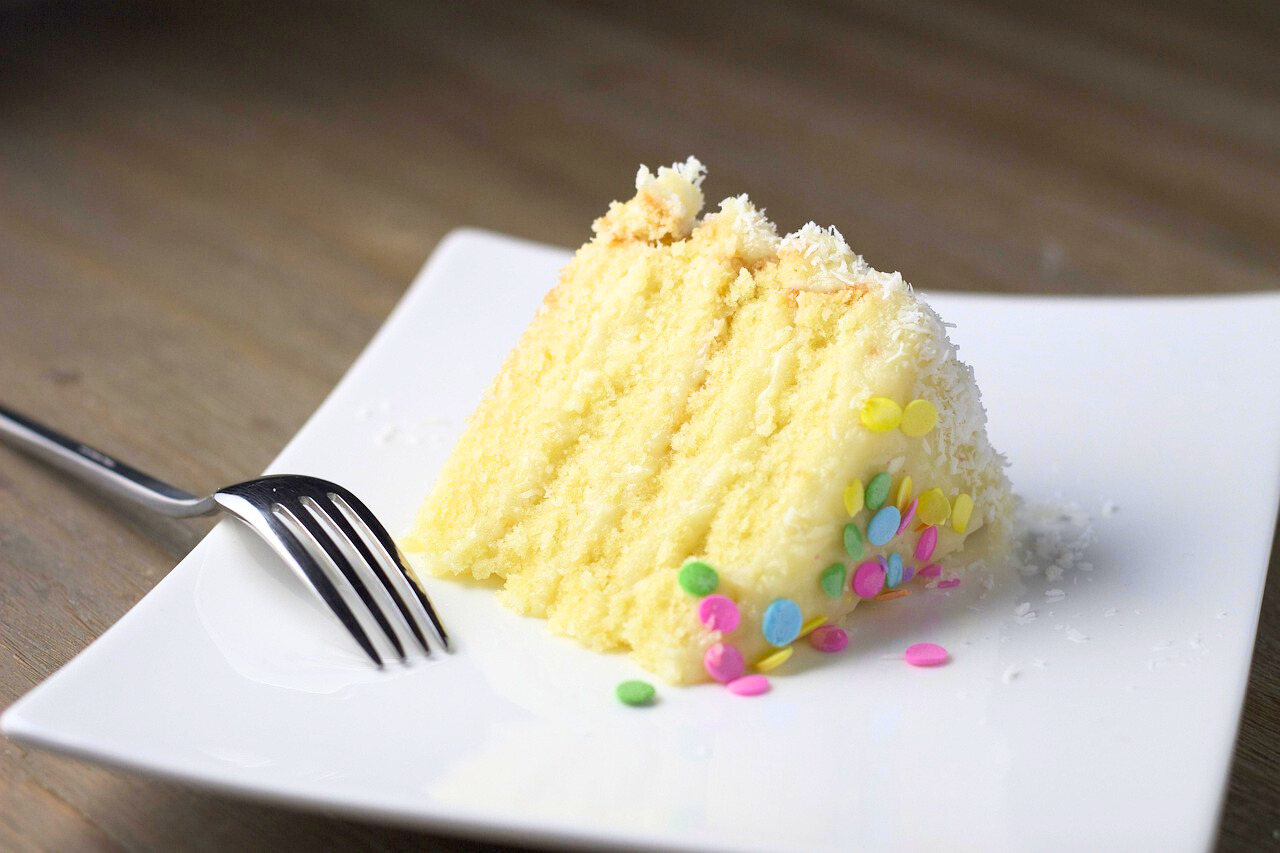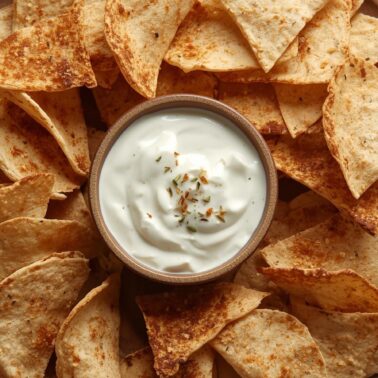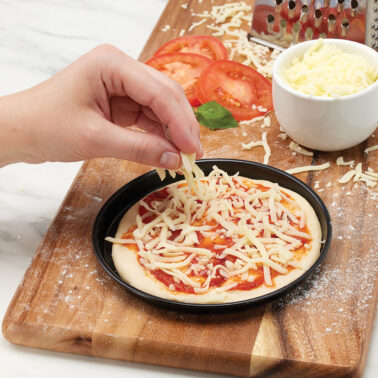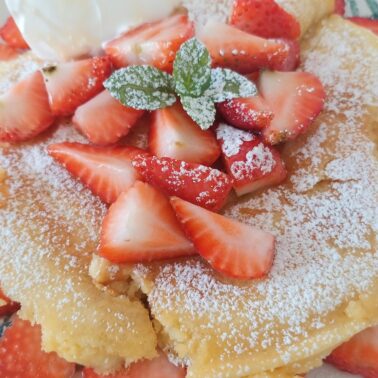This simple vanilla cake from our Deluxe Cake Decorating Studio is a super fun baking project that tastes amazing and can be changed in lots of ways. It’s a sweet, cozy flavor that is perfect for any day, whether you want to make a special birthday treat or a yummy snack. With just a little imagination, you can turn this recipe into all kinds of delicious, creative desserts.
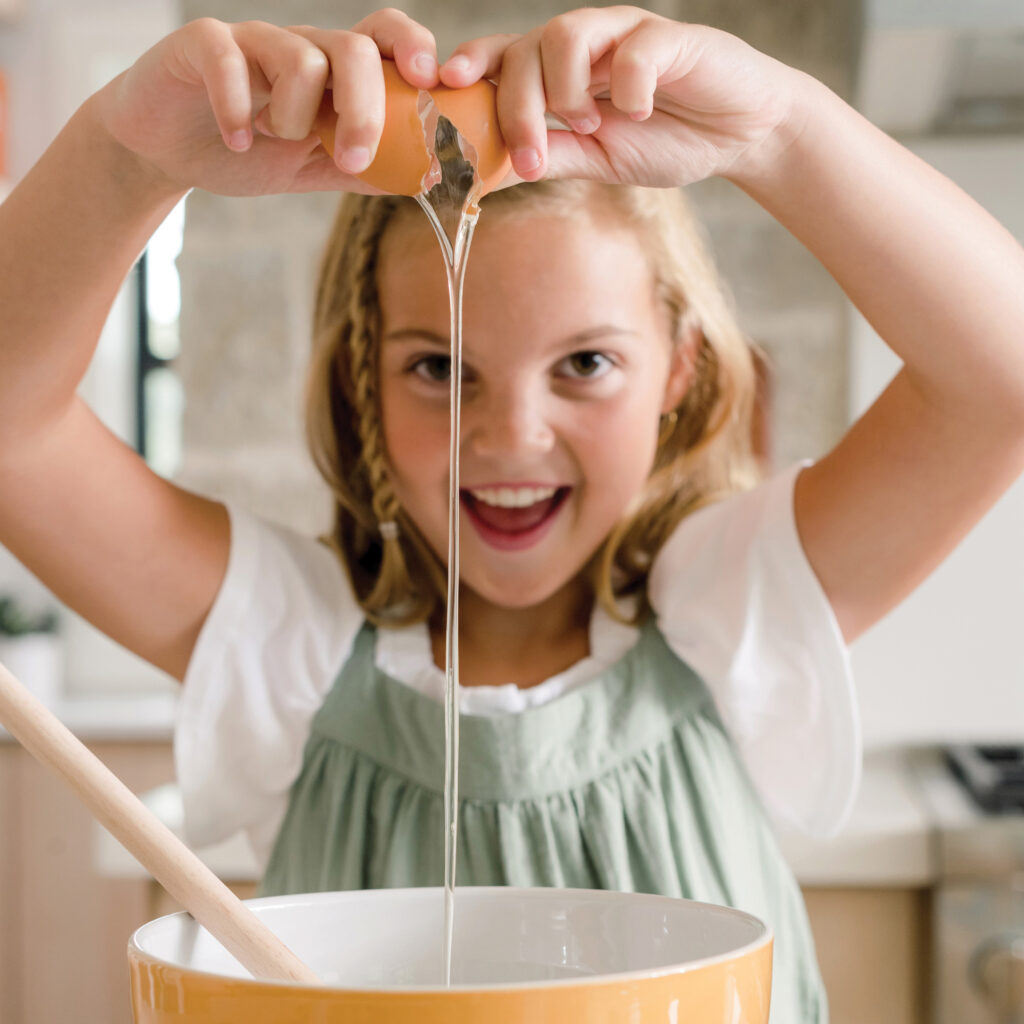
Perfect Vanilla Cake
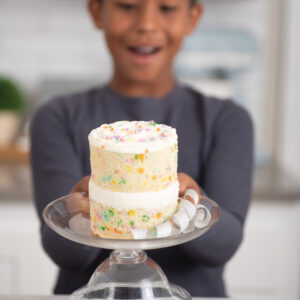
A perfectly simple and delightful vanilla cake. Consider folding your favorite sprinkles into the wet batter for a fun "Confetti Cake." Try substituting the vanilla extract with another extract like: almond, orange, peppermint, key lime or others for a different flavor altogether!
Equipment
- 2 8-inch round cake pans
- Measuring Cups
- Measuring Spoons
- Medium Mixing Bowl for the dry ingredients
- Large Mixing Bowl for the eggs
- Mixer
- Whisk
- Silicone Spatula
- Cooling Racks
- Toothpicks to test if the cakes are done
Ingredients
- 1 1/2 cups Granulated Sugar
- 2 1/2 cups All-Purpose Flour
- 1 cup Unsalted Butter, softened and cut into small cubes
- 1 1/4 cups Whole Milk, at room temperature
- 1 Tbsp Vanilla Extract
- 2 1/2 tsp Baking Powder
- 1/2 tsp Salt
- 4 large Egg Whites, at room temperature
Instructions
- Prepare You Pan and Oven– Preheat the oven to 350 degrees F.– Grease two 8-inch round cake pans with butter and dust with a bit of flour so the cakes are easily removed once baking has completed.
- Combine Dry Ingredients– In a bowl, use the mixer to combine the flour, sugar, baking powder and salt.– Mix on a low speed until evenly distributed.
- Mix in Butter– Add the softened, cubed butter to the dry ingredients.– Mix on a low speed until ingredients are evenly mixed.– Scrape the sides of the bowl to make sure all of the batter is mixed.
- Add Liquid– In a separate small bowl, whisk together the milk and vanilla extract. – With the mixer on low speed, slowly pour about half of the milk mixture into the flour-butter mixture. – Mix until just combined. Scrape down the bowl.
- Incorporate Egg Whites– In another clean, large bowl, using the mixer, beat the room temperature egg whites until they form soft peaks.– If using the stand mixer, use the whisk attachment for this step.
- Add Remaining Liquid and Egg Whites. – Add the rest of the milk mixture to the batter and mix until combined. – Gently fold in the beaten egg whites with a spatula until the batter is smooth and no streaks remain. Do not overmix.
- Pour and Bake– Divide the batter evenly between the prepared cake pans. – Bake for 30–40 minutes, or until a toothpick inserted into the center comes out clean.
- Cool – Let the cakes cool in their pans on a wire rack for 10 minutes before flipping them onto the rack to cool completely. – Once cooled, frost them with your favorite frosting.
Notes
Don’t Over-Mix Your Batter!
Over-mixing can make your cake tough, dense, and chewy instead of light and fluffy. Here are some signs that you’re starting to over-mix:- Elastic and stretchy batter: Over-mixed batter will become more rubbery and sticky. When you lift some of it with a spoon or spatula, it will stretch instead of falling off cleanly.
- Dense consistency: The batter will look thick, heavy, and dense, rather than light and airy. This is because over-mixing destroys the tiny air bubbles that were incorporated during the initial steps.
- Runny texture (in foam cakes): In sponge or chiffon cakes that rely on whipped egg whites, over-mixing the foam can cause it to deflate and become watery and slack.
- Loss of sheen: A properly mixed batter for these cakes should look satiny and glossy. Over-mixing can cause it to appear dull.
Nutrition
Serving: 1slice, Calories: 527kcal, Carbohydrates: 70g, Protein: 7g, Fat: 25g, Saturated Fat: 15g, Polyunsaturated Fat: 1g, Monounsaturated Fat: 6g, Trans Fat: 1g, Cholesterol: 66mg, Sodium: 324mg, Potassium: 136mg, Fiber: 1g, Sugar: 40g, Vitamin A: 771IU, Calcium: 135mg, Iron: 2mg
Nutrition information is automatically calculated, so should only be used as an approximation.
Love this recipe?Leave a review below!
